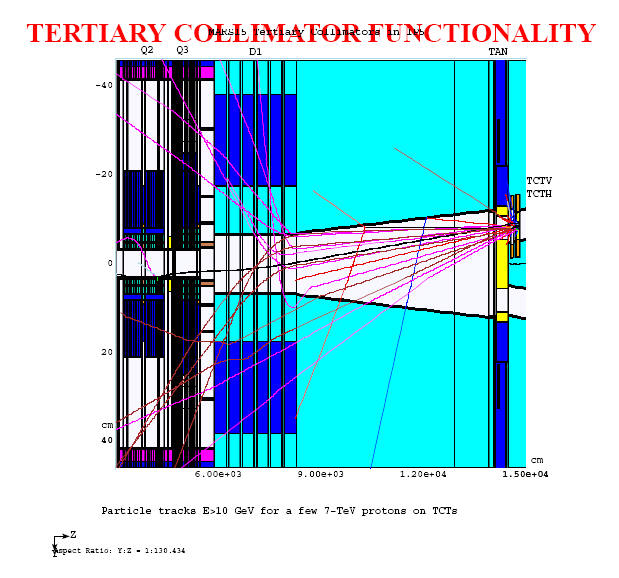
This website is no longer maintained. Its content may be obsolete. Please visit http://home.cern for current CERN information.
Nikolai Mokhov
Particle leak from secondary collimators and beam-gas scattering upstream of the LHC interaction points would create a �tertiary halo�. Possible errors and inefficiency of the IP6 machine protection system at an unsynchronized beam abort (TCDQ etc) would result in a misbehaved beam. In both cases, corresponding beam losses would take place in the inner triplets. It is proposed to put tertiary collimators (TCT�s) around the interaction points in order to protect the superconducting triplets and collider detectors against these beam losses. LHC apertures in beam sigma: primary collimators - 6, secondary collimators - 7, inner triplet - 8.4, arcs around 30. Triplets potentially absorb tertiary beam halo from 8.4s to 30s.
Minimal phase advance between the TCTs and the inner triplets, in order to produce an optimal shadow.
2. Place horizontal TCT�s at a location of sufficient beam-beam separation, such that two opposite jaws can be placed for the incoming beam.
3. Put TCT�s farther away from IP1/IP5, such that showers originating from the TCT�s are for diluted at the collider detectors.
4. Accumulated and residual doses at the TCT�s do not create extra problems in that region at normal operational conditions.
5. Accept that the TCT�s can be destroyed at the full beam loss.
6. TCT-induced peak energy deposition in the triplets below the quench limit (1.6 mW/g) with a safety margin of 3.
7. TCT-induced backgrounds in the collider detectors to not exceed the accelerator-related ones.
